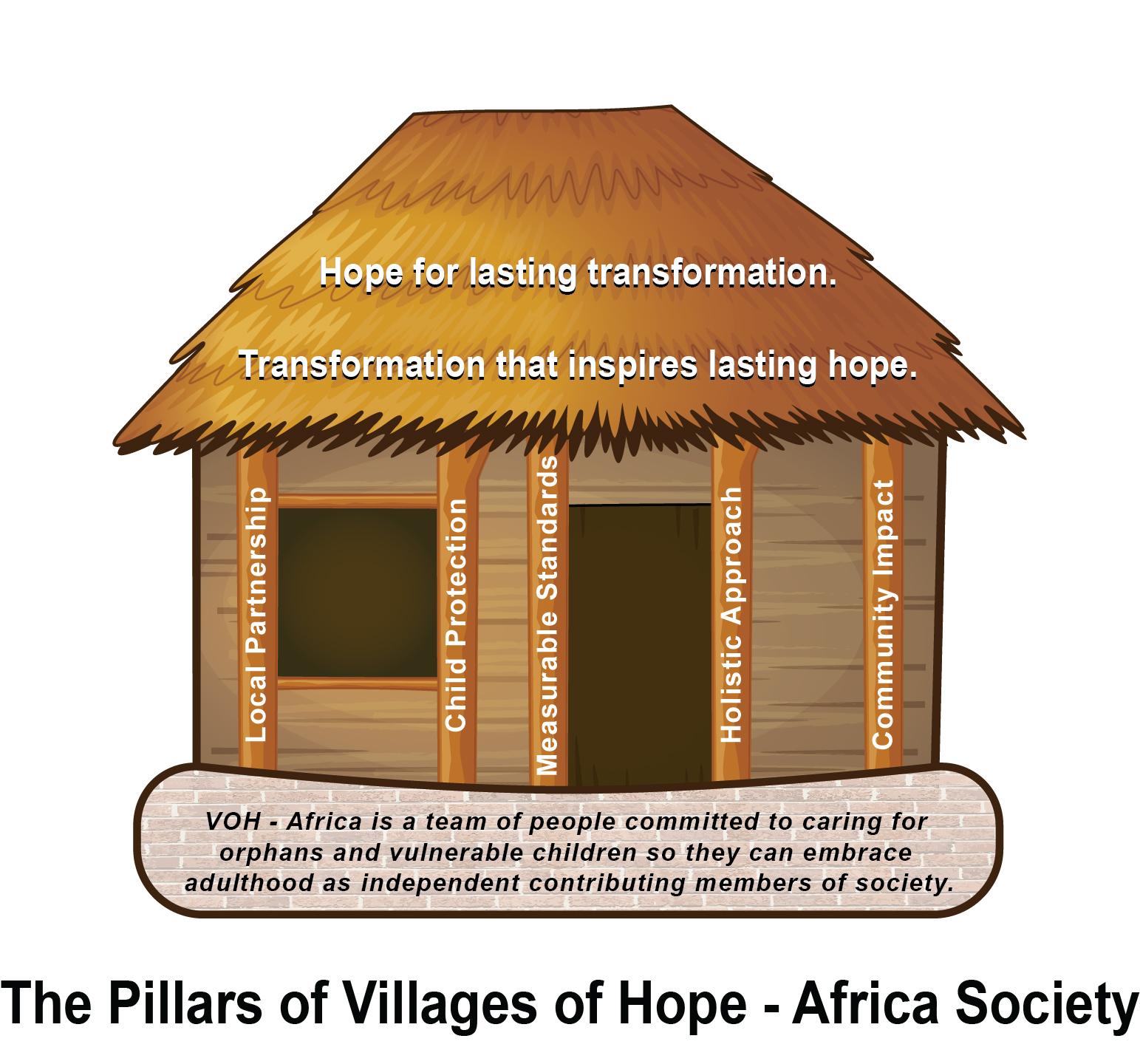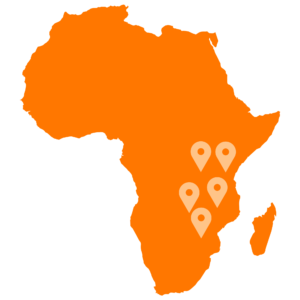Villages of Hope: Africa Society (VOH Africa) is a Canadian charitable organization registered with the CRA (Registration #84950 3073 RR0001) bringing hope to children in need throughout Africa.
We have 10 villages located in 5 countries and our programs provide education, nutrition, shelter, and healthcare to over 7,000 children.
Mission & Vision
Our mission is to bring lasting hope to orphans and vulnerable children throughout Africa by providing them with holistic (emotional, intellectual, physical, social, spiritual) and loving care so they can embrace adulthood as contributing members of society.
Our vision is that all children are loved and cared for.
We Value:
- Individuals and are committed to the development of the whole person
- Children because they are the future
- Community and foster positive community-based relationships
- Education and provide opportunities to achieve academic excellence
- Excellence in the lives of our children, staff, and projects.
- Family and create an environment of love that produces self-worth, moral values, and a sense of stability and security.
Our Pillars

The Base – a team of people.
The Capstone – lasting transformation in the lives of every child we care for, instilling lifelong hope for today, tomorrow, and eternity.
The Pillars:
- Local Partnerships: We partner with local, like-minded people who share our vision. Having local, like-minded partners allows the children to be cared for within the context of their own culture. Local boards provide governance. National Leadership grows out of local partnerships, allowing us to reach more children.
- Child Protection: All children in our care are protected from all forms of abuse. All those who come into contact with VOH children are governed by our Child Protection Policy (CPP). Children and adults are trained in the area of CPP. Our CPP is developed by VOH leaders and draws from our many years of experience working with orphans and vulnerable children and is reviewed every two years.
- Measurable Standards: A set of standards exists to ensure each Village delivers quality care to the children. These standards assist the Village leadership and boards in the development of programs and policies. Indicators and contra-indicators have been developed to better monitor the operation of each of the Villages. A self-audit toolkit has been developed for Village Directors, Boards, and Leaders to determine how they are measuring up to the mission and standards.
- Holistic Approach: We endeavour to care for the whole person physically, by providing nutrition, healthcare, sport, and exercise programs; emotionally, by providing Psycho-Social care, counselling, and child-friendly environments; spiritually, by providing bible teaching, clubs, and spiritual communities; mentally, by providing education and skills training.
- Community Impact: We provide both residential and non-residential care for orphans and vulnerable children. We support the efforts of extended families that are caring for orphans and vulnerable children. We provide employment at our Villages for people from the local communities. Children who grow up at VOH and transition out of our care have a positive impact on the local communities.
Our Programs
We believe in providing holistic (emotional, intellectual, physical, social, spiritual) and loving care to vulnerable children. We do this through our various programs, which are offered at each of our Village locations.
We provide education, nutrition, and healthcare to over 4,100 orphans and vulnerable children throughout Africa. We also provide Shelter for children who do not have a safe place to live.
Click here to learn more about our programs.
Locations

We are currently located in 5 countries throughout Africa:
- Burundi (Bujumbura, Maramvya)
- Malawi (Kauma, Lilongwe)
- Tanzania (Bulale, Mwanza)
- Zambia (Chongwe, Kitwe, Mongu)
- Zimbabwe (Harare)
Click here to learn more about each of our locations.
Child Protection
Villages of Hope Africa values all children and believes that every child has the right to protection from all forms of abuse. Our child protection policy is the first step to ensuring all our locations are child-friendly and safe. We believe “Every Child is Everyone’s Child.”
We are committed to providing safe and secure environments for each child under our care by ensuring that all staff, volunteers, children and stake-holders follow the written child protection policy.
Our Child Protection Policy
Our child protection policy describes what we do to protect children from harm. We believe it is our responsibility to protect all children in our care.
Download a copy of our Child Protection Policy Manual HERE.
Child Sponsorship
You can sponsor a Village of Hope child and help us provide them with education, health care, and other basic needs.
For more information, visit our Child Sponsorship page.
History
The first Village of Hope in Kitwe, Zambia was opened in 1999, as a response to the HIV/Aids pandemic that left many children orphaned and vulnerable.
It is located next to Racecourse, a large shanty compound teeming with children. The site began with free education for children of the nearby community who had no other access to education, and a children’s home to provide care for orphans. This first VOH location grew from one orphan home and a single classroom into a fully functional care facility for children in need in Zambia.
With the success of VOH Kitwe, national and international support for its approach was received. With the growing need for similar Children’s Village in other sub-Saharan countries, the work expanded from Zambia to Zimbabwe, Malawi, Burundi and Tanzania.
Branching out to multiple villages created a need for an umbrella organization under which they would all fall and thus, in 2004, the Villages of Hope: Africa Society was formed. This organizational union ensures that quality childcare standards are established and met at each Village of Hope. It also helps each Village of Hope acquire essential financial and human resources and it facilitates working relationships between all Villages of Hope and their surrounding communities.


Comments are closed.